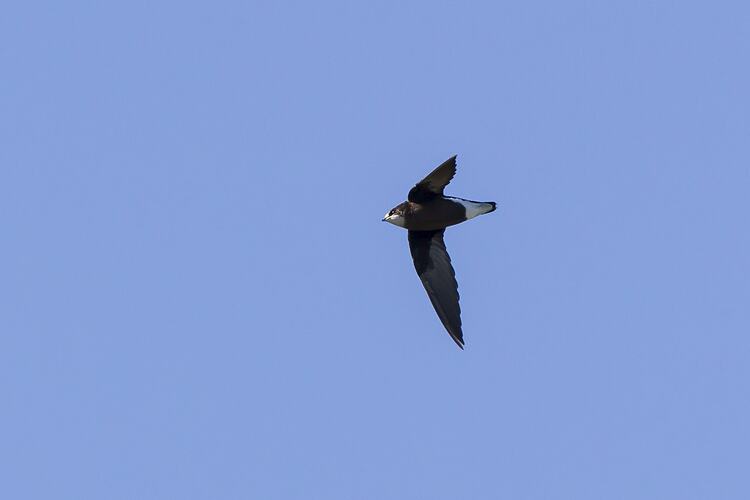General Description
This large swift has long curved wings and white markings. The plumage is predominantly grey-brown, glossed with green and the wings are long and pointed. The tail is short and square, with the protruding feather shafts giving a spiky appearance. The throat and undertail is white. Body size up to 21 cm.
Biology
White-throated Needletails are non-breeding migrants to Australia, arriving from their breeding grounds in the northern hemisphere in October each year and leaving between May and August. They are able to fly at speeds of up to 130 km per hour. They are an aerial bird, and for a time it was commonly believed that they did not land while in Australia. It has now been observed that birds will roost in trees, and radio-tracking has since confirmed that this is a regular activity. They feed on flying insects, such as termites, ants, beetles and flies and catch insects in flight in their wide beaks. These birds usually feed in rising thermal currents associated with storm fronts and bushfires and they are commonly seen moving with wind fronts. While feeding, they protect their eyes with a special membrane and a small ridge of feathers.
Distribution
Eastern and Northern Australia
Habitat
Almost exclusively aerial; over a wide variety of habitats.
More Information
-
Animal Type
-
Animal SubType
-
Brief Id
Grey-brown swift with white throat and underside of tail.
-
Colours
Grey-brown, White
-
Maximum Size
21 cm
-
Diet
Insects
-
Endemicity
-
Commercial
No
-
Conservation Statuses
CITES: Not listed, FFG Threatened List: Vulnerable, EPBC Act 1999: Vulnerable, IUCN Red List: Least Concern
-
Taxon Name
-
Scientific Author
(Latham, 1801)
-
Common Name
White-throated Needletail
-
Kingdom
-
Phylum
-
Subphylum
-
Class
-
Order
-
Family
-
Genus
-
Species Name
caudacutus

